
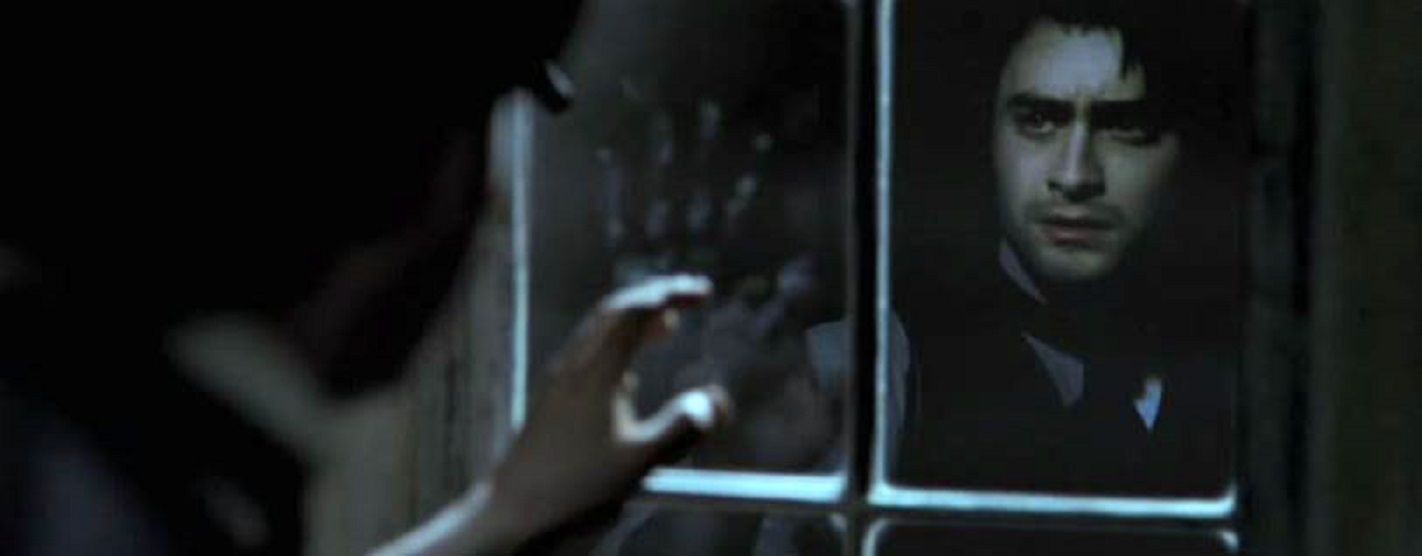
When Hammer Film Productions stopped producing films in 1979 they didn’t just die, they transitioned.
Their next endeavour was the television anthology series Hammer House of Horrors. There were 13 episodes of the series — one starring my boy, Peter Cushing — and a second series, Hammer House of Mystery and Suspense was produced in the 1990’s. Both series were like any other anthology, a mixed bag of quality but full of talent. Hammer switching to horror television seems like a no-brainer, but they never really got a solid foothold and their entries paled in comparison to most of the episodes from Tales from the Crypt and the like.
But for most of the time Hammer lay dormant. The films they released had since gone on to inspire a generation of filmmakers who were releasing horror films that matched and surpassed Hammer’s best efforts. The ‘70s brought Halloween and The Texas Chainsaw Massacre and Dawn of the Dead, the ‘80s brought A Nightmare on Elm Street, The Evil Dead and The Thing, the ‘90s brought Scream and Dead Alive and The Blair Witch Project. Most of them were in some way influenced by Hammer, or were at least made possible by the barriers Hammer horror tested and broke through.
It’s hard to say that Hammer went wrong along the way. It’s almost impossible for a studio to work so long, predominantly in a specific genre, without falling behind. Even Disney has had its ups and downs through the years.
But slowly influence has turned the reverence and nostalgia. The filmmakers who saw Frankenstein’s monster get his eye shot out had picked up the camera and filmed their own version. And then those filmmakers became influencers and Hammer moved from popular to influential to nostalgic legend.
Until 2010 when Hammer rose from the dead.
Early rumblings were abound in the 2000’s of new projects being developed at Hammer. Their first output in years happened to be a vampre serial for MySpace called Beyond the Rave. Obviously I haven’t see that because, you know, MySpace, but it was only a couple short years after that before Hammer was back on the scene in the horror genre.
I’m going to discuss a few popular films from the intervening years that were directly influenced by Hammer, as well as most of Hammer’s recent productions. Some of them are great, some of them not so much, but all of them are worth talking about.
The Rocky Horror Picture Show (1975)
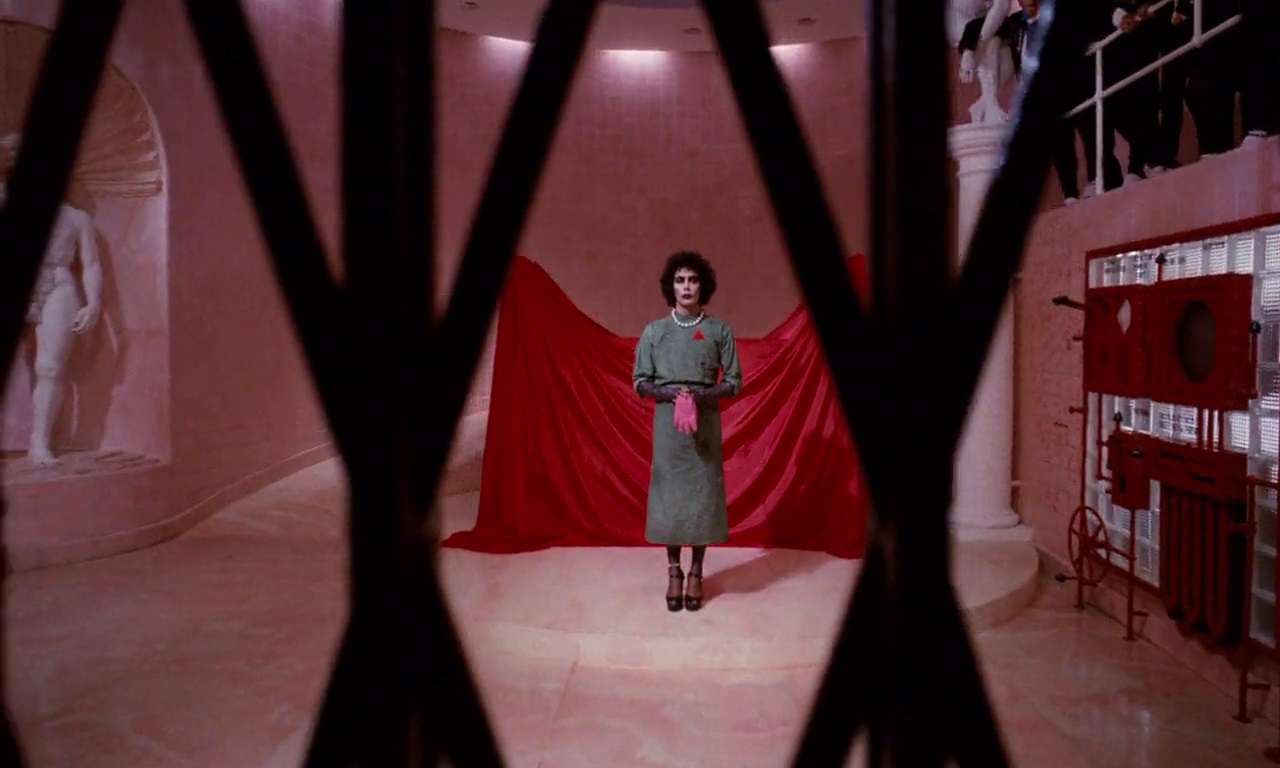
Part of the appeal of The Rocky Horror Picture Show is its campy reinterpretation of classic horror and science fiction iconography. A large chunk of that iconography is taken from classic Hammer horror films. It’s easy to overlook that considering the wide influence The Rocky Horror Picture Show has had on its own. But the entire production, from the original writer Richard O’Brien through the director Jim Sharman, was indebted to Hammer.
The Rocky Horror Picture Show was actually filmed at Bray Studios, the shooting location for tons of classic Hammer pictures. They also reused sets and props from earlier productions, lending a veneer of verisimilitude to the proceedings.
Clearly the biggest takeaway Richard O’Brien got from Hammer that he channeled through Rocky Horror was the importance of individualism. Being who you are, no matter how different you may seem from the “normal” crowd, isn’t just unavoidable, it’s advisable. While it doesn’t always pay off in the Hammer films, or even in Rocky Horror, it’s not really painted as a bad thing or an evil. Just a separate facet of being human.
Being a fan of Hammer, as well as ‘50s genre fare like beach and biker movies, there are a few stock types that show up in the film that are fun to see twisted. Brad, played by Barry Bostwick, is the usual Bland Leading Man who is completely turned on his head. His level-headedness is played as a joke early on and then transforms into something more interesting. We also get riffs on the mad scientist, the final girl and the wise elder. We even get Charles Gray, one-time Hamer villain from The Devil Rides Out, as the narrator of the film.
Of course The Rocky Horror Picture Show means a lot of different things to a lot of people. Most of the themes and the audience it’s attracted are more important than the film’s connection to Hammer. But it’s still worth pointing out that, without Hammer’s style and level of influence, there would almost certainly never be a “Time Warp”.
Halloween (1978)

John Carpenter is a huge fan of Hammer. While Halloween wasn’t influenced by Hammer horror films exclusively, or even predominantly, but it at least played a small part in creating one of the most iconic villains of all time.
Michael Myers plays a large part in the horror villain canon. He’s up there with Jason Voorhees and Freddy Krueger in the new-wave, slasher-focused horror iconography. But Myers owes a debt of gratitude to The Curse of Frankenstein and The Mummy, and specifically Christopher Lee. The emotion Lee was able to exude through pure physicality set a precedent for any horror monster that came after. As much as Halloween’s villain incorporated aspects of Peeping Tom and Black Christmas the silent killer performance was pure Hammer creature. I feel like Lee’s sympathetic physicality is the goal that all 6’5″-plus actors strive to attain when portraying horror movie villains.
Halloween is an influential classic on its own. The daylight terror of its stalking killer and the classic score are just a couple of reasons why the movie resonates. Carpenter was a visionary and interpreted his influences without directly copying them. He also managed to get a fantastic lead actress in Jamie Lee Curtis — who is shockingly close to adult Jamie Lee Curtis when you rewatch it — and a respected but by no means shlock-averse actor like Donald Pleasance to play the Van Helsing-ish role of Dr. Loomis.
Halloween ended up spawning its own franchise, its own imitators and creating its own rules. But there’s no denying that Halloween, in its current near perfect form, wouldn’t exist without Hammer.
The Elephant Man (1980)
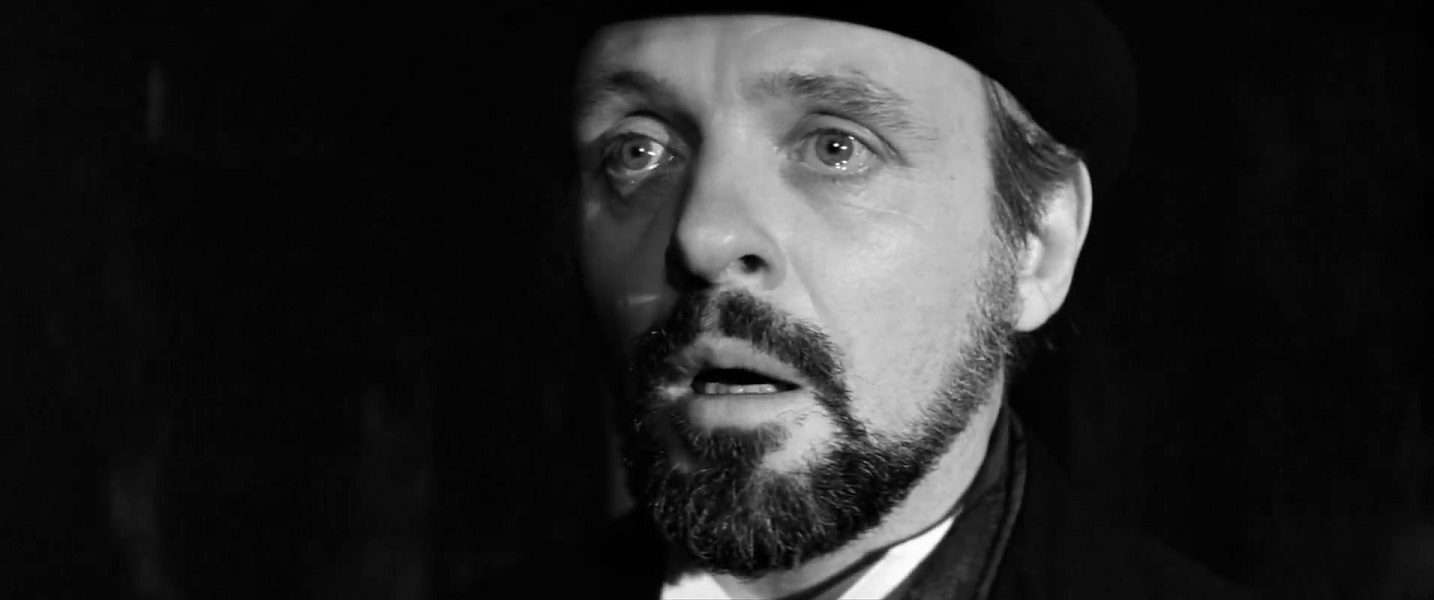
The Elephant Man is an odd movie to include on this list. There are a few things that set it apart from what you’d normally consider a horror movie or a movie influenced by Hammer. David Lynch is such a powerful, singular artistic voice that it’s hard to nail down any influence once it’s been filtered through his mind.
Luckily The Elephant Man is one of Lynch’s most straightforward pieces. The true story of John Merrick, a Victorian era sideshow attraction who became a cause célêbre and met a tragic end. There are of course some Lynchian twists to the style and structure of the film. Even though The Elephant Man was only Lynch’s second feature, with a debut as strong as Eraserhead Lynch’s voice was clearly strong. The dream sequences are pure Lynch, as are the uncomfortably lingering scenes, but there traditional film left lots of room for Hammer’s influence to come out.
The most obvious is the gorgeous black and white cinematography. While Hammer’s biggest successes were colour features their black and white films were usually impeccable. It helped that The Elephant Man was shot by Freddie Francis, the man behind the lense for Hammer classics like Paranoiac, Dracula Has Risen from the Grave and The Evil of Frankenstein. The cinematography was rich and crisp while still keeping the claustrophobic closeness of a Lynch film.
The Elephant Man sticks out when it comes to films influenced by Hammer, and admittedly it’s a stretch, but I’d argue that it’s a lot closer to the spirit than you’d expect. Ignoring the fact that it’s a biopic, The Elephant Man creates a sympathetic, misunderstood lead and follows his ups and downs. John Hurt’s performance is deservedly an all-timer and Anthony Hopkins as Merrick’s doctor is perfect. His performance when he first sees Merrick’s body, as shown in the picture above, is the purest essence of acting. Hopkins is the exact right performer to explore his character’s many facets and if Hammer had continued to be an active production company throughout the ‘80s I wouldn’t have been surprised to see Hopkins leading a few of their films.
Halloween III: Season of the Witch (1982)
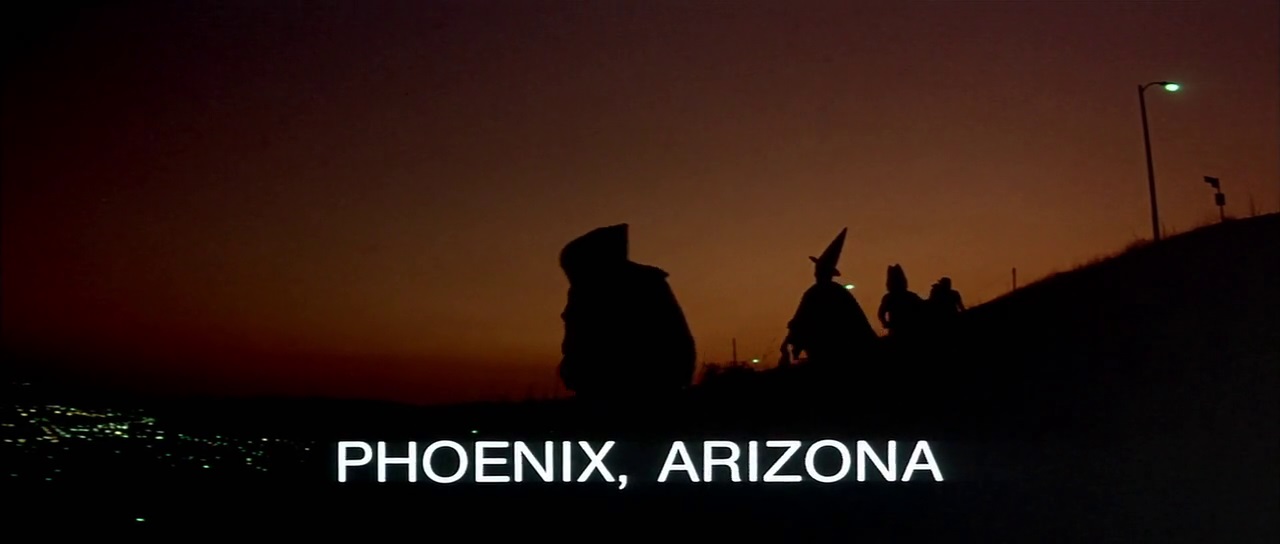
Halloween III: Season of the Witch was a big old failure when it first came out. It didn’t have Michael Myers in it and it was weird as all hell. This was John Carpenter’s original vision, to turn the Halloween franchise into an anthology where each film is a separate story. Obviously people didn’t want that, but what they got was still pretty interesting.
It definitely comes as no surprise that John Carpenter is a massive Quatermass fan. Not only did he write his 1987 film Prince of Darkness under the pseudonym Martin Quatermass he also remade The Thing from Another World — which he used extensively in Halloween as well — showing his affinity for ‘50s sci-fi. Above and beyond that, Carpenter asked Nigel Kneale, the creator and writer of Quatermass, to write the script for the Halloween franchise’s third entry.
Kneale wrote a version of the film which was altered by producers to amp up the horror aspects. Kneale’s displeasure for this caused him to remove his name from the final film, but the story remains the same. Once you find out that Kneale wrote it the entire film clicks into place. It’s basically a Quatermass tale if Quatermass was replaced by a schlubby, womanizing, American doctor. While Kneale, like clockwork, disliked the final product, so did critics and audiences.
Unfairly, I’d say.
Season of the Witch’s technical aspects are unimpeachable. It’s probably the best looking film of the series aside from the original and maybe Rob Zombie’s Halloween II. Carpenter also provided a score for the film which is, of course, awesome. Tommy Lee Wallace is the director for the film, a long time collaborator of Carpenter, and does a fine job. He’s clearly a Carpenter imitation and it would have been nice to see more individual style, but there are worse directors to copy.
The true selling point of the movie is the story, which is classic Kneale. It’s a slow-building mystery with bursts of unexplainable horror and weirdness. By the time we find out what’s going on there’s almost too much to process. Witchcraft powered microchips in Halloween masks, robot henchmen, Tom Atkins as a ladies man, stolen Stonehenge. It’s all so unbelievable but it somehow works.
While Season of the Witch was a failure by most metrics I’m glad it’s had a bit of a critical reevaluation. It definitely isn’t perfect, but there’s enough there to love. And I’ll stand behind anything that has Nigel Kneale’s fingerprints all over it.
Sleepy Hollow (1999)
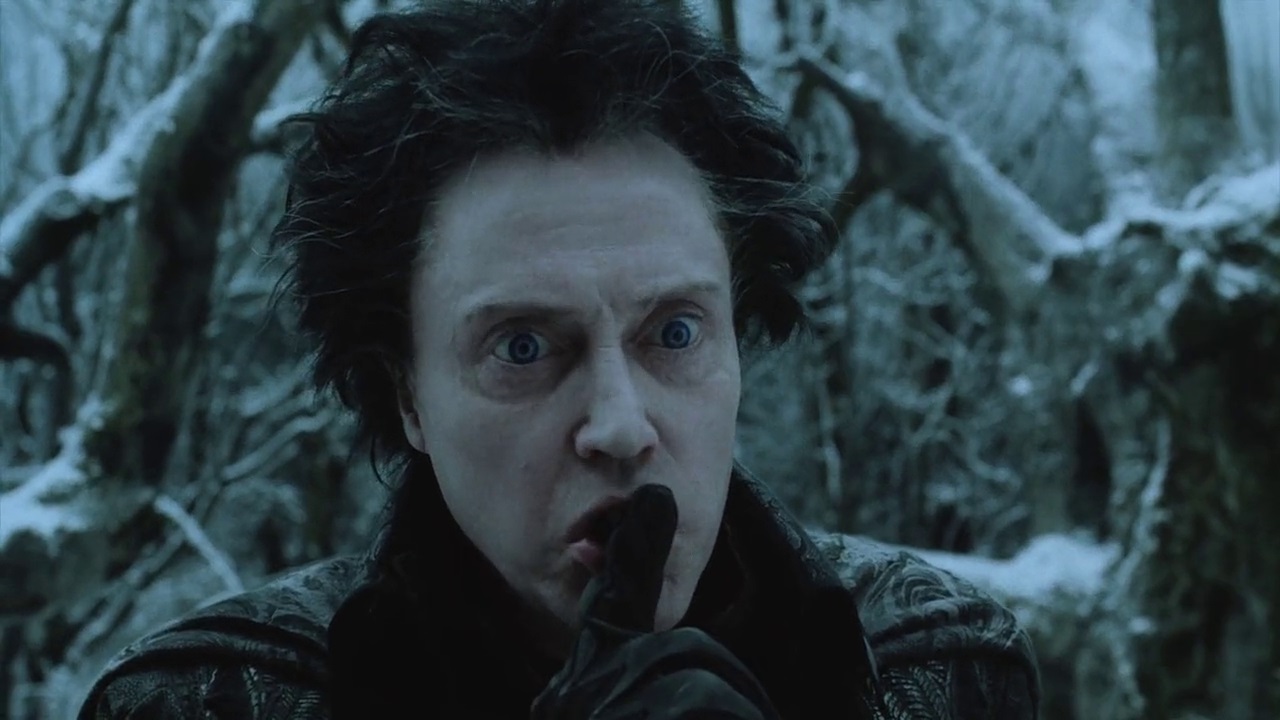
It’s in no way a surprise that Tim Burton is a fan of Hammer films. He’s always worn his influences on his sleeve and is clearly into the gothic aesthetic. His reverence for b-movie schlock aims low, like Ed Wood’s filmography, as well as high, like Hammer.
Sleepy Hollow is a love letter to Hammer horror. Every inch of the film is filled with references to or features of classic Hammer productions. There are carriages, a classic horror villain, a quaint village, respected British thespians and the classic, cherry red Kensington gore. Christopher Lee and Michael Gough, two Hammer regulars, even have small roles in the film to truly drive home the connection.
This movie is also arguably Tim Burton’s last great film, give or take a Big Fish.
It plays perfectly to everyone’s strengths. Burton is able to go all out on his Hammer love because it’s a tale about a town plagued by superstition and a very real monster. Johnny Depp and Christina Ricci both get to show off their gothic bonafides. Depp is particularly effective playing a cowardly Ichabod Crane, the actor’s penchant for quirk hadn’t yet worn out its welcome.
The production design not only elevates the film but accentuates the influence. The film is full of mansions and foggy woods and windmills. Every aspect of the film feels perfectly of-the-period even though we’re dealing with a headless horseman.
Speaking of, Christopher Walken’s wordless, unhinged performance definitely owes a debt to Christopher Lee. Whether or not Walken was wilfully emulating Lee’s many monsters he easily stands side-by-side with them. His wide eyes and sharpened teeth are reminiscent of Lee’s feral Dracula. While both Christophers are icons, it’s a shame Walken hasn’t done more horror. His dedication to every role, no matter how “beneath him” it may seem, is truly inspiring.
Let Me In (2010)
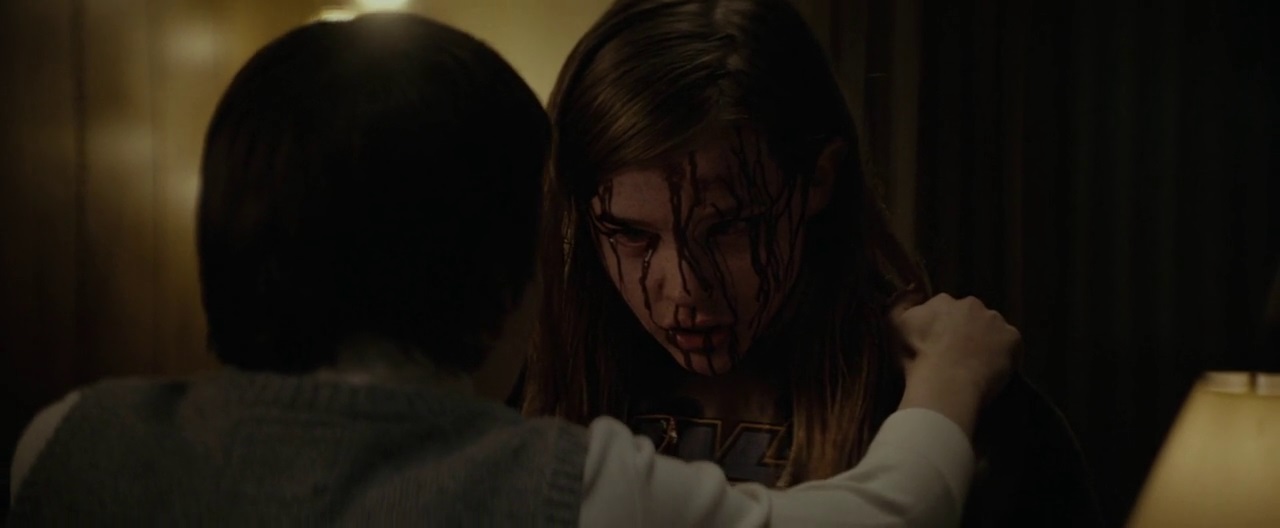
You’d be hard pressed to find a better movie than Let Me In to act as a “we’re back” statement for a long dormant production studio. The movie is a remake of the instant classic from Sweden, Let the Right One In, a movie that I’m a huge fan of. When I heard there was going to be an American remake it was an uphill battle in my eyes. So it was a small miracle that Let Me In wasn’t just good it was just as good as the original.
There are a couple problems though. 1) it’s a straight-up remake, and 2) it isn’t really a good example of Hammer’s style. So it ends up being more of an outlier than a positive sign of things to come.
Regardless of that Let Me In is almost mesmerizingly good. It avoids a lot of the pitfalls you would assume of an American remake of a Swedish film — except for the crudely dumbed-down title — and keeps a deliberate pace throughout. The scenes linger and the slower pace helps to accentuate the moments of visceral violence. They even manage to create their own style and iconography, specifically Richard Jenkins’ character’s garbage bag mask which manages to stick with you.
Speaking of Jenkins, the cast for this film is loaded. Jenkins is creepy and sympathetically sad at equal turns and Elias Koteas is always a pleasant presence. The child actors are just as talented, which is a feat in and of itself. Dylan Minnette plays a school bully with enough depth to make it memorable and Kodi Smit-McPhee is the heartbreakingly innocent lead. The true standout of the film is Chloe Grace Moretz as the eternally 12 vampire. Moretz gained fame and popularity by playing characters who were wise beyond their years in (500) Days of Summer and Kick-Ass but Let Me In was the first film to fully explore the idea.
Overall Let Me In is a tragic romance surrounded by the trappings of a horror film. There are deaths and scares and gallons of blood, but there’s a traditional, European sensibility and a focus on emulating and respecting the feelings of children that elevates the film above the normal genre fare. While the movie is very different stylistically from most other Hammer offerings it still ranks among the best they’ve ever produced.
The Resident (2011)
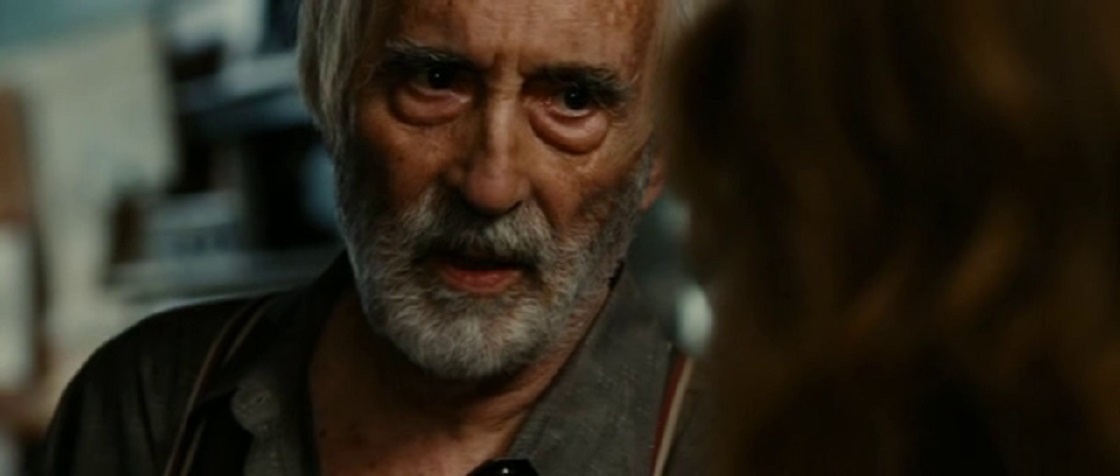
The Resident is a much better example of what Hammer has done and continues to do. It’s a standard horror/thriller that moves at a brisk pace and is, for better or worse, much closer to the present day template of a Hammer production than Let Me In was.
Hilary Swank moves into a too-good-to-be-true apartment in New York City and, shocker of all shockers, it is. Jeffrey Dean Morgan plays the owner and super of the building, Lee Pace is Swank’s ex-boyfriend and Christopher Lee plays Morgan’s sickly grandfather. So the cast is really solid. Unfortunately the film doesn’t rise above the standard predatory thriller template.
The only time the film really tries to do more than the bare minimum is when Swank and Morgan’s characters hook up and the film backtracks to show Morgan has been a creep the whole time. Unfortunately this little trick only works if someone has been tricked into thinking the movie is a completely different genre than it actually is, which is hard to do in this day and age. We know it’s a thriller and we know Jeffrey Dean Morgan is probably a weirdo so the “twist” doesn’t land at all.
As much as I’m ragging on it for being bog-standard, The Resident isn’t terrible. It’s firmly middle-ground when it comes to semi-erotic thrillers, but the cast helps to elevate it a notch. Fantastic character actor Michael Massee (RIP) even makes a small appearance. Even though Jeffrey Dean Morgan rose to prominence by playing a doomed love interest on the show Grey’s Anatomy he’s seemed much more at home in genre fare like Watchmen and Supernatural. He’s pretty great here, giving us a little bit of Anthony Perkins mixed with some old school Clark Gable. Swank is given a much less interesting role and does her best, but she’s saddled with her character oddly having less depth than the villain and at least two too many lingering shots of her going into or coming out of the bathtub.
Like I said, The Resident isn’t terrible, but it still barely rises above background noise. If I caught it on TV I maybe wouldn’t change the channel, but I definitely wouldn’t be telling others to tune in.
Wake Wood (2011)

The gritty, low-budget, digital aspect of Wake Wood is actually really endearing and sets the film apart from the other neo-Hammer movies I watched. It’s certainly not the first film to have a solid cast — Aidan Gillen, Eva Birthistle and Timothy Spall in this case — but it’s the first one to seem wholly original while still maintaining a connection to classic British horror.
Wake Wood seems more in line with folk horror than the classic Hammer brand of gothic horror, but it still embodies a lot of the same aspects. It’s super low budget, rural and supernatural. The story is also personal and empathetic, turning a dead child into a real monkey’s paw situation.
After Gillen and Birthistle’s daughter dies they movie to a rural town and stumble upon a ritual the community performs which allows a deceased loved one to return for three days. It’s actually more high concept than most Hammer films. Or seemingly more high concept, Hammer somehow makes vampirism seem natural.
Nothing that Wake Wood does is very original. We’ve seen it all in Wicker Man or Pet Sematary but it’s carried along by its swerves from the norm and the strength of its performances. The low-fi digital look of the film also helps sell it as down-to-earth without fall into the trap of making all the shots boring and pedestrian.
Wake Wood probably embodies what Hammer can and should be more than any other film they’ve produced since their revival. It’s a new take on a classic idea on a tight budget with solid actors. It also leans into the squeamish gore, which is probably more of a selling point now. It isn’t necessarily the best movie Hammer has produced recently — that’s still Let Me In — but it’s certainly close.
The Woman in Black (2012)
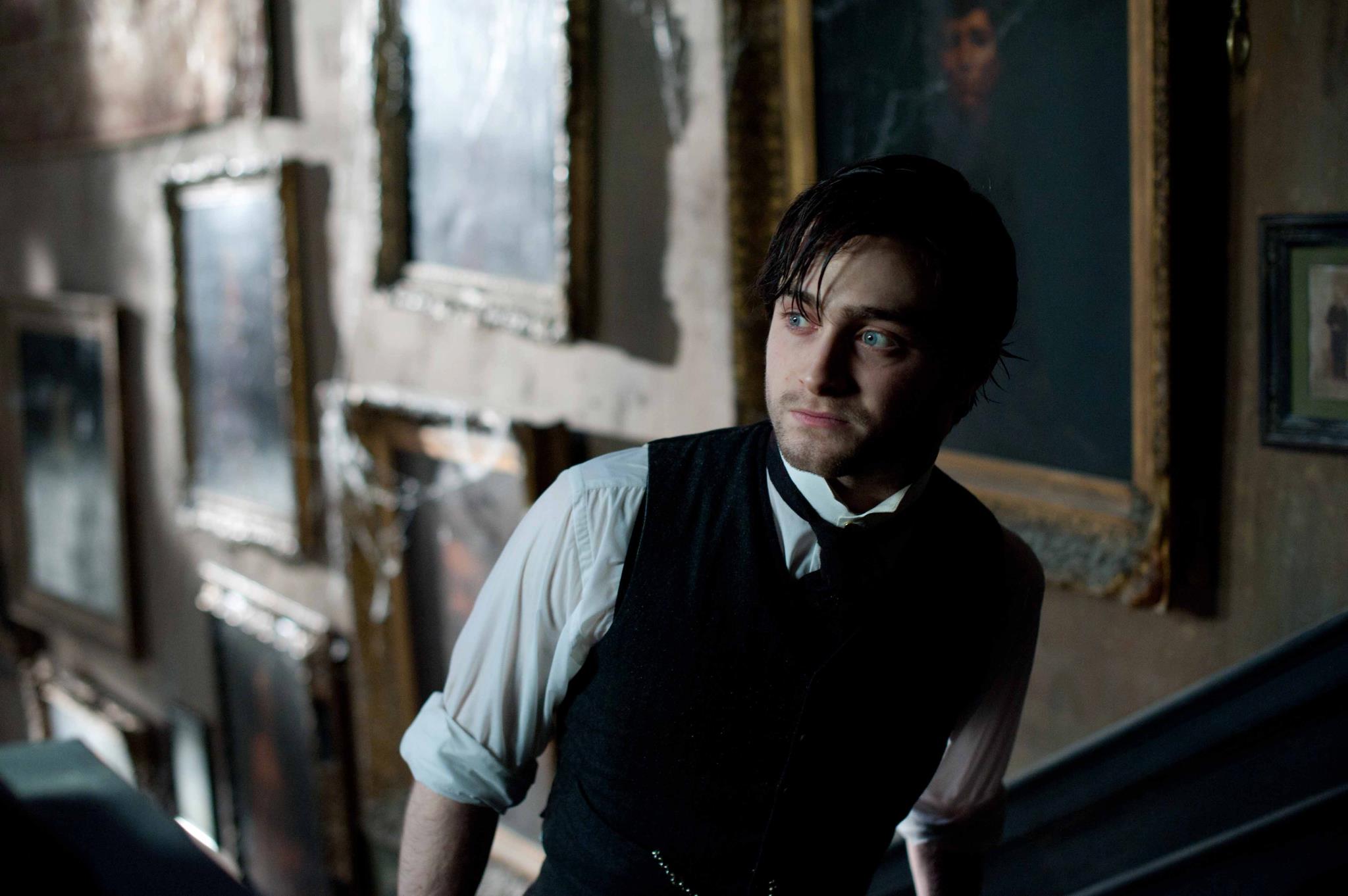
I actually really disliked this movie the first time I watched it, so I was kind of dreading rewatching it for this article. But, to my surprise, The Woman in Black isn’t that bad. It’s not great either, but there’s enough about it to enjoy that it keeps the movie afloat.
The first big plus is Daniel Radcliffe’s performance as the “way too willing to put up with shit” estate lawyer, Arthur Kipps. I know they set it up as his job being threatened if he doesn’t . . . read a bunch of documents, I guess? But still. Misty moors and creepy women (in black) would be enough to send me packing, I don’t care how many times I get to ride in Ciaran Hinds’ motorized auto-carriage.
Overall the film is a solid meditation on grief, especially the death of a child, and how we externalize and internalize that. Almost every character in the film has had a loved one die and we get their perspective on the grieving process. Whether it’s blaming outsiders or finding solace, we see almost every method of dealing with the pain.
The script is by Jane Goldman, based on a novel by the same name that had previously been adapted by begrudging Hammer stalwart, Nigel Kneale. The script is fine, it’s really the pacing that lets the film down. I’m not sure if they didn’t trust the flow of the script, but there’s an over-abundance of jump scares throughout the film. I’m a defender of the jump scare in general, but when it’s done poorly it’s annoying, and there are at least three different cheap and lame jumps scares in The Woman in Black.
Like I said, the first time I watched this film I was unimpressed.Maybe my changed mind is inflating its quality, but I enjoyed it well enough. A major flaw, however, is the fact that the worst parts of the film are the supernatural aspects. When it’s Daniel Radcliffe being spooked or Ciaran Hinds spouting wisdom it’s a cracking little drama. I’d still recommend it, but it’s too uneven to be a true classic.
The Quiet Ones (2014)
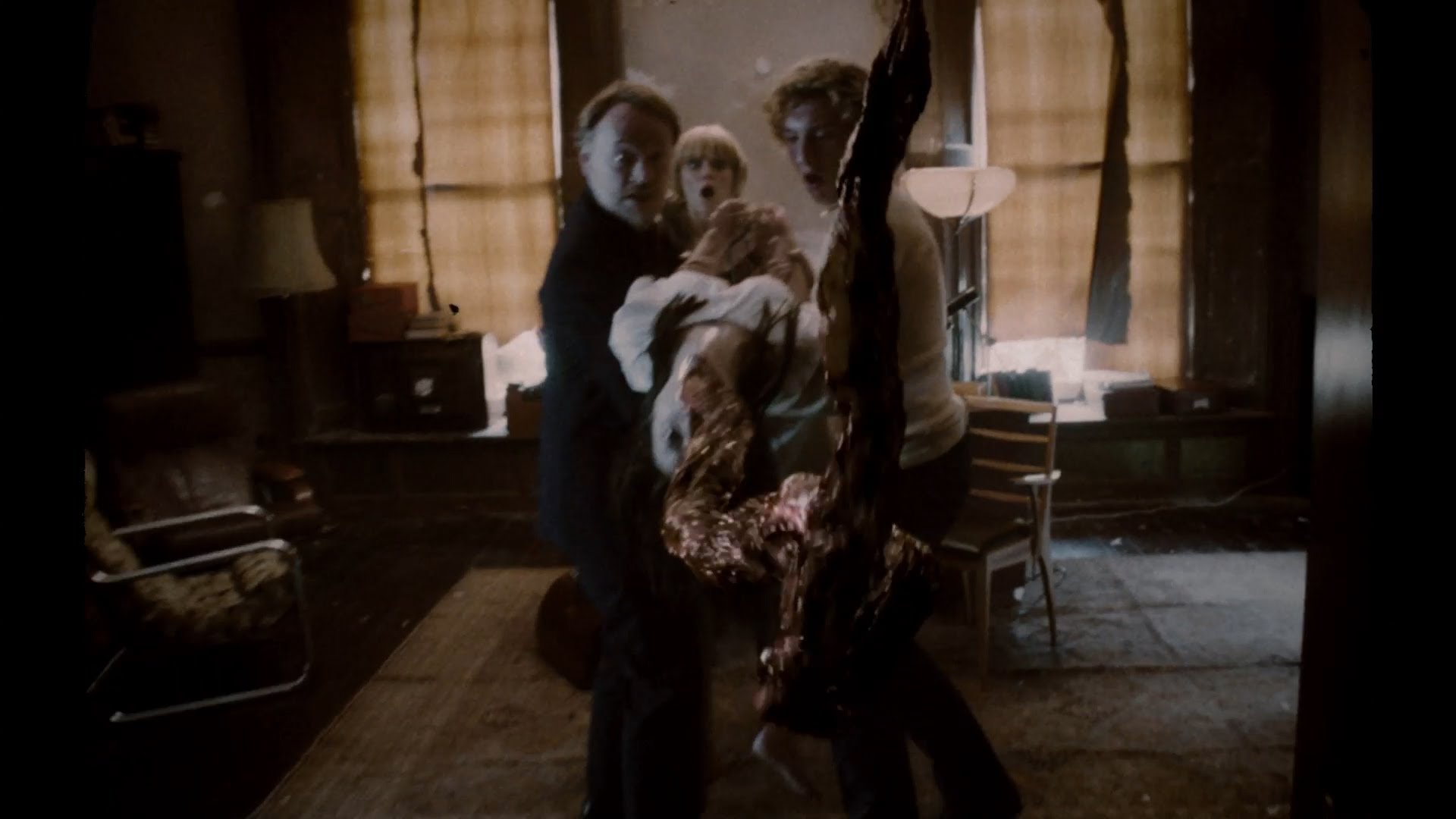
The Quiet Ones is a good example of Hammer chasing a trend. The main issue with the film is that it doesn’t know what it wants to be. It’s part found footage, part British throwback and part possession film. It’s a messy hodgepodge that doesn’t do anyone involved any favours.
While Jared Harris is always a treat and, though my exposure to them is limited, I enjoy Sam Claflin, Olivia Cooke and Erin Richards, none of the performances really rise above what’s expected. It’s as though every performer know exactly what type of film they’re making and none of them try to stretch outside of those perceived limitations.
While the trappings of a Hammer horror film are all there — the period setting, the occult, the overwhelming Britishness — the movie doesn’t do anything interesting with it. Like I said earlier, it’s a mash-up of ideas and genres, ultimately taking other films ideas without bothering to improve on them.
It certainly falls into the category of low-budget horror, and it’s not a total waste of time, but it definitely coasts on reputation and perceived atmosphere. What The Quiet Ones needed was an overwhelmingly good performance — maybe I just expected too much of Jared Harris — or an original twist on a played out possession story, and the movie delivers neither.
It’s an easy skip and hopefully whichever movies Hammer decides to release down the line aim a little higher than The Quiet Ones did.
Neo-Hammer Recommendations
I have a few final recommendations for other movies and pieces of media that you should check out if you’re into Hammer horror. There have been a few books published about Hammer, specifically The Hammer Story by Marcus Hearn & Alan Barnes, A History of Horror: The Rise and Fall of the House of Hammer by Denis Meikle and A Thing of Unspeakable Horror: The History of Hammer Films by Sinclair McKay. Most of the books about Hammer have insights and interviews well beyond anything posted here.
Another must-see for any horror fan in general is the three part BBC series A History of Horror, written and hosted by Hammer fanatic Mark Gatiss. The second episode is specifically devoted to the influence and ingenuity of Hammer horror films, but the entire series is worth a watch. Gatiss also considers Peter Cushing and underrated cinematic figure, which I happen to agree with wholeheartedly.
Oh, you also definitely have to check out the fake trailer Edgar Wright directed for Grindhouse. The “film”, Don’t, is a play on British horror and Hammer films specifically as well as the fact that movies with certain words in the title — “don’t” included — would get a harsher rating.
https://www.youtube.com/watch?v=lttrIPDFplU
The Legacy of Hammer
The true legacy of Hammer films, specifically their horror movies, is undisputed. There are countless examples of filmmakers who have been inspired and encouraged by Hammer’s output. Martin Scorsese, Edgar Wright, Quentin Tarantino and many more. Filmmakers who have themselves shaped and influenced the cinematic landscape. The films they created brought new creations to the screen and forced new life into the works they adapted.
Unfortunately, as much as Hammer surpassed what Universal managed to accomplish with its first round of horror classics, so to is the current Hammer being surpassed. While the films the studio has released so far during its recent ressurection have been fine on average, they’re neither revolutionary or particularly inspiring. These days Hammer isn’t reinventing the genre or leading the pack, they’re barely keeping up. The true successor to Hammer’s filmmaking legacy is actually a completely separate studio: Blumhouse Productions.
Blumhouse, founded by Jason Blum, embodies everything Hammer stood for. Their productions are low budget crowd pleasers that attract top talent in front of and behind the camera. Blumhouse allows their artists to create their visions (within budget, of course) and their output includes crowd-pleasers, box office hits and genre-defining classics. Basically any recent horror hit has been a Blumhouse production: Paranormal Activity, Insidious, The Purge, Oculus, Sinister and many more. They even have off-genre fare like The Normal Heart, Whiplash and Stretch.
The spirit of Blumhouse makes the studio a natural extension of the products and priorities of Hammer. The crown may rest on another studio’s head but the legacy of Hammer still stretches far and wide. It warms my heart knowing that years from now will still sneak down to the television and may catch The Quatermass Xperiment or The Curse of Frankenstein or Let Me In late at night and it may still freak the holy hell out of them.
That was Hammer’s will. (Obviously.)


![[REVIEW] ‘GEIGER #1’ GLOWS-UP THE POST-APOCALYPTIC WASTELAND GENRE](https://geekd-out.com/wp-content/uploads/2021/04/geiger-1_c2345sdfs8a9cf-150x150.jpg)
![[REVIEW] ‘IN THE RAVENOUS DARK’ BRINGS BLOOD MAGIC TO LIFE](https://geekd-out.com/wp-content/uploads/2021/05/ravenousdarkfeature-150x150.png)